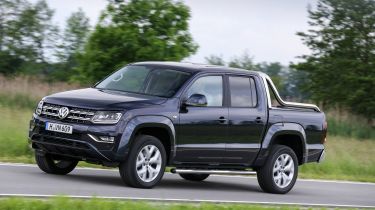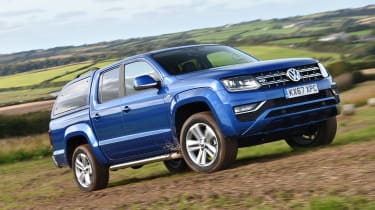Volkswagen Amarok pickup review (2011-2022)
"The Volkswagen Amarok pickup is an upmarket entry into the class, with an SUV-like interior and five seats, as well as a large load bed"
Pros
- Excellent build quality
- Spacious interior
- Big load area
Cons
- Difficult to park
- Uncomfortable suspension
- Car's size can be intimidating
The Volkswagen Amarok brought a touch of SUV sophistication to the rough-and-ready pick-up market populated by the likes of the Ford Ranger, Mitsubishi L200, Nissan Navara and Toyota Hilux. Like the VW, these are quite family-friendly, but the Amarok went further with its classy styling and well-equipped, five-seat interior to the extent that it really does feel like a work and recreational vehicle in one. The Mercedes X-Class tried to offer even more luxury, but has since been discontinued. The SsangYong Musso is Carbuyer's reigning Best Pickup for 2023.
At the time of writing, the Amarok is no longer available to order new either. The model you’re reading about here will be replaced later in 2022 by an all-new Amarok. Set to share its underpinnings with the next-generation Ford Ranger, the Amarok will still feature butch styling but with a more modern interior with the latest infotainment technology available. Read more about the upcoming Volkswagen Amarok.
To underline its prestige, the soon-to-be-replaced Amarok doesn’t get four-cylinder engines like most of its rivals. It’s powered by a 3.0-litre V6 diesel producing 201 or 255bhp, both of which are only available with an eight-speed gearbox and permanent four-wheel drive. A six-speed manual gearbox is no longer offered; it was previously available on the lower-powered engine and was an uncommon choice, so there are fewer used Amaroks with manual gearboxes than automatic ones.
More reviews
In-depth reviews
The most powerful version has an overboost function that briefly raises power to 268bhp, which is handy for quick bursts of acceleration and just tops the 255bhp of the Mercedes X-Class X350d. Whichever engine you go for, you’ll need to be prepared for running costs that are slightly higher than the Amarok’s competitors, because both officially manage just 28.2mpg. All are certainly strong enough, with the ability to haul 3,100kg – its maximum braked trailer limit – or carry a one-tonne payload.
That monster payload means that, when unladen, the Amarok can bounce around on rough roads and tracks. Rivals with a similarly traditional rear suspension set-up also suffer from this. While it looks car-like, its steering lacks sharpness and the VW leans heavily in corners. Otherwise, it’s easy enough to drive for a big vehicle and it comes to a stop quickly and confidently thanks to powerful brakes.
With the new engines have come new exterior looks and updated alloy wheels. Inside, VW has splashed out on a dashboard featuring a large touchscreen infotainment system.There are two trim levels: Trendline and Highline, plus two limited-run Black Edition models. Generally similar in price to the equivalent Ford Ranger, the Amarok is nicer to live with if not cheaper to run.
The Amarok was awarded four out of five stars for safety by Euro NCAP. This latest is unlikely to improve on that, but it does get electronic stability control and a system that applies the brakes after a collision to avoid further impacts. There’s a reversing camera, too, in addition to a system called ParkPilot that can take care of the steering when squeezing into a tight spot - and there will be a few with a car as big as the Amarok. When the new iteration of VW’s pick-up truck is launched, you can expect more driver-assistance features to be fitted as standard.














